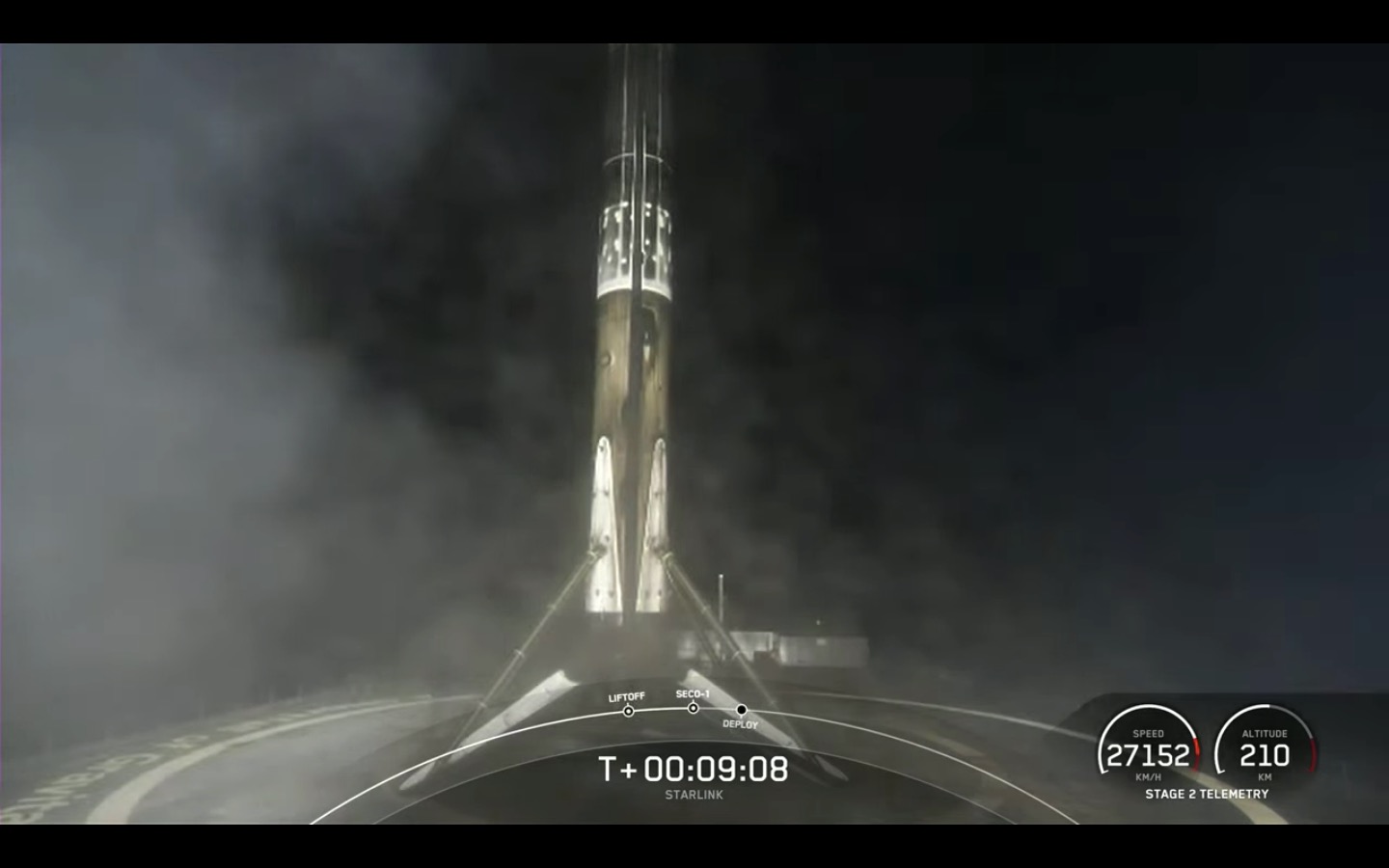SpaceX's Starlink internet megaconstellation keeps growing.
A two-stage SpaceX Falcon 9 rocket topped with 49 Starlink satellites lifted off from NASA's Kennedy Space Center in Florida today (Jan. 18) at 9:02 p.m. EST (0203 GMT on Jan. 19).
About nine minutes later, the rocket's first stage came down to Earth for a pinpoint touchdown on the SpaceX droneship A Shortfall of Gravitas, which was stationed in the Atlantic Ocean off the Florida coast.
Related: SpaceX's Starlink satellite megaconstellation launches in photos

It was the 10th successful landing for this particular booster, which had previously launched six dedicated Starlink missions, the GPS III-3 satellite for the U.S. military, the Turksat 5A satellite for Turkey and the Transporter 2 rideshare mission, which lofted 85 small satellites and three Starlink craft.
The Falcon 9's second stage, meanwhile, kept powering its way to orbit, eventually deploying the 49 satellites roughly 15 minutes after launch. The second stage was out of range of ground stations when that happened, so confirmation of deployment success didn't come until about an hour later.
Today's launch was SpaceX's 36th dedicated Starlink mission, and it brought the total number of Starlink satellites lofted to more than 2,000. All of those spacecraft have launched since May 2019 except for two prototypes known as TinTin A and TinTin B, which lifted off in February 2018.
Get the Space.com Newsletter
Breaking space news, the latest updates on rocket launches, skywatching events and more!
Most of the Starlink satellites are alive and well.
"1,469 Starlink satellites active. 272 moving to operational orbits. Laser links activate soon," SpaceX founder and CEO Elon Musk said via Twitter on Saturday (Jan. 15).
"Laser links" refers to an upgrade that SpaceX implemented in 2021, which allows Starlink satellites to communicate with each other efficiently without relying on ground relays.
We should see many more Starlink launches over the coming weeks and months. SpaceX already has permission from the U.S. Federal Communications Commission to launch a total of 12,000 Starlink satellites, and the company has filed paperwork with the International Telecommunication Union to loft an additional 30,000.
Starlink isn't the only broadband megaconstellation in the works. For example, OneWeb is building a network of 648 internet satellites and has already launched nearly 400 of them into orbit. Amazon has announced plans to launch about 3,200 internet satellites of its own, and California startup Astra recently filed paperwork for its own megaconstellation of about 13,000 craft.
Today's successful rocket landing was the 103rd overall for SpaceX, which routinely reuses space hardware to boost efficiency and reduce costs. Both halves of the payload fairing — the protective nose cone that surrounds satellites during launch — that flew today already had one mission under their belts, and SpaceX aimed to fish them out of the sea for further reuse.
Mike Wall is the author of "Out There" (Grand Central Publishing, 2018; illustrated by Karl Tate), a book about the search for alien life. Follow him on Twitter @michaeldwall. Follow us on Twitter @Spacedotcom or on Facebook.
Join our Space Forums to keep talking space on the latest missions, night sky and more! And if you have a news tip, correction or comment, let us know at: community@space.com.

Michael Wall is a Senior Space Writer with Space.com and joined the team in 2010. He primarily covers exoplanets, spaceflight and military space, but has been known to dabble in the space art beat. His book about the search for alien life, "Out There," was published on Nov. 13, 2018. Before becoming a science writer, Michael worked as a herpetologist and wildlife biologist. He has a Ph.D. in evolutionary biology from the University of Sydney, Australia, a bachelor's degree from the University of Arizona, and a graduate certificate in science writing from the University of California, Santa Cruz. To find out what his latest project is, you can follow Michael on Twitter.









